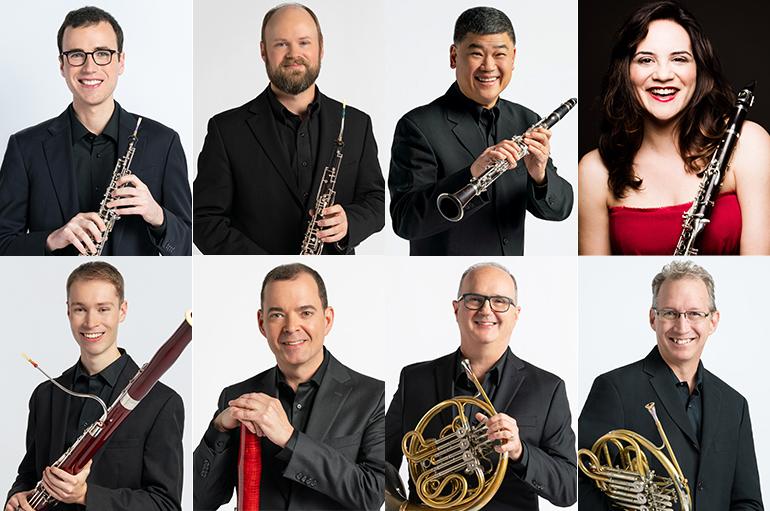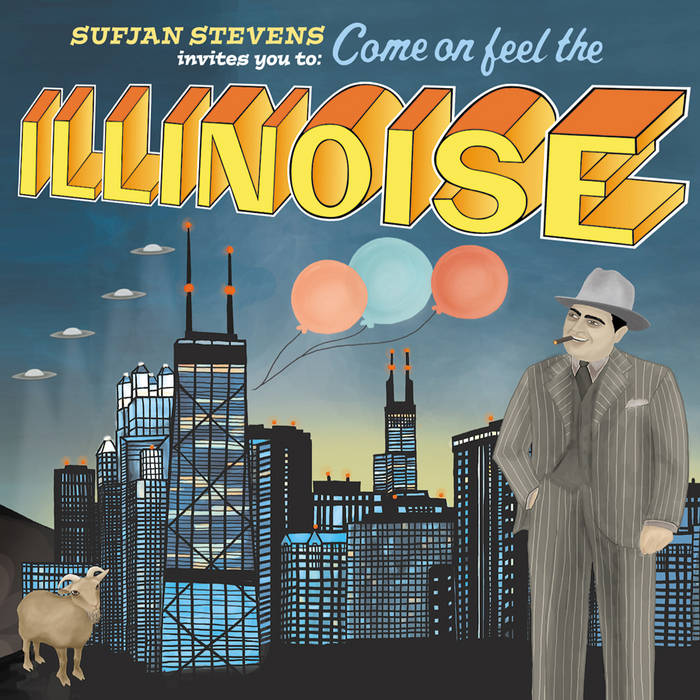The Anat Cohen Quartet exploded on stage at the Logan Center last Sunday, continuing the Jazz at the Logan series with selections from Cohen’s most recent recording, Claroscuro. Cohen, a clarinet virtuoso who was voted Clarinetist of the Year six times in a row by the Jazz Journalists Association, brought an energy and excitement to the stage that is all too often absent in contemporary American jazz. The rest of the quartet—Jason Linder on piano, Joe Martin on bass, and Daniel Freedman on drums—provided stunning performances as well. The overall effect was a group of equals, rather than a backing track for Cohen’s clarinet work.
The quartet looked straight out of a downtown New York jazz club: Cohen in dark jeans and a black top, Martin and Freedman wearing dress shirts open at the neck and leather dress shoes. And yet the group was far from stuffy or traditional. It quickly became clear that the quartet, though playing straight jazz, was in its own way just as playful and inventive as the experimental jazz group The Bad Plus, which opened the series in October. The quartet created an incredibly delicate yet bold fabric of sound that was extremely full and robust but always dynamic. It was invigorating, modern, and without a single dull or repetitive moment.
The concert started out with the intense “Nightmare,” originally by Artie Shaw, featuring a hectic piano solo from Jason Linder. Next, “Anat’s Dance” gave the quartet a chance to show off its technical skill. Here, Freedman’s drums gave the audience a glimpse of the insane, playful tactics he would inject into his performance throughout the afternoon, including playing the drums and cymbals with his fingers and palms, using a broom instead of jazz brushes, and licking his fingers and rubbing them on the drum head to create a strangely melodic vibration. Martin also opened up, juxtaposing traditional walking bass and intense grooves with disorienting clusters of single notes. As the song’s romping pace accelerated, Cohen set down her clarinet to walk around the stage. She shed her jacket and watched the three musicians grapple with each other. They seemed to all solo at the same time while achieving a mysterious continuity.
Then the quartet took up two songs by Brazilian guitarist, singer, and composer Milton Nascimento. As Cohen mentioned, Nascimento hails from the Minas Gerais region of Brazil, and the two pieces the quartet performed were in the style of the region, which differs slightly from the well-known Brazilian genres of bossa nova and samba. To match the mood, Freedman pulled out mallets, and Martin made his double bass sing a mellow, sweet tone using a bow. The pairing had everyone either rocking back and forth in their seats or shaking their heads in disbelief. Then, all of a sudden, Cohen put down her clarinet and picked up a tambourine; pianist Jason Linder joined her. As they beat the final notes into the ground, Martin and Freedman played with Brazilian rhythm and a laid-back New York groove.
Putting down the tambourine and drum, the quartet jumped right into its incredible version of the classic “La Vie en Rose,” popularized by Edith Piaf. On Claroscuro, the track features trombonist and vocalist Wycliffe Gordon, but Cohen and company’s version surprisingly didn’t miss Gordon’s brass or Louis Armstrong–esque crooning. The quartet gave the piece a triumphant new life, keeping the notes spare and tight.
Its uncluttered approach smacked of the original excitement and glamour of jazz: infectious, uncontrollable smiling and spine tingling ensued. After wandering the stage and leaning on the piano for a bit to watch her fellow musicians at work, Cohen picked the clarinet back up, finishing off the piece with a “Rhapsody in Blue”–esque whine to the final high note, which was met with whoops and raucous applause.
Cohen mentioned that being on stage with the quartet always reminds her of what “incredible, creative, and in-the-moment music jazz is.” As the quartet finished with “All Brothers” featuring a jaw-dropping five-minute drum solo, the audience was certainly reminded as well. Gathering my things after a long standing ovation, I couldn’t help but hear someone mention to a friend: “breathtaking.” The show certainly was, but the overwhelming feeling I received while exiting the theater was one of elation and excitement. It isn’t often that a jazz group can make a tired jazz standard sound vigorous. In retrospect, that’s also exactly the feeling The Bad Plus provided in October, despite its avant-garde approach and non-traditional track choices. Through its second concert, the Jazz at the Logan series firmly reminded us that jazz is still relevant. And not only that—it’s also damn good fun.








